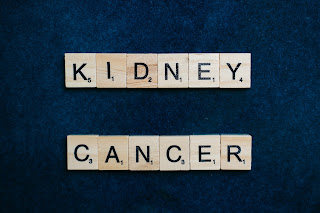Toenail fungus, otherwise called onychomycosis, is a typical nail disease that affects a large number of individuals around the world. It is caused by a group of fungi called dermatophytes, which thrive in warm and moist environments such as the inside of shoes and socks. This infection can occur in both toenails and fingernails, but it is more common in toenails.
Symptoms of Toenail Fungus
Toenail fungus can be identified by a few common symptoms. One of the most common symptoms is the discoloration of the toenail. The nail may appear yellow, white, or brown. Additionally, the nail may become thick and brittle, making it difficult to cut. The infected nail may also have a foul odor, and in some cases, the nail may separate from the nail bed.
Causes of Toenail Fungus
Toenail decay is brought about by a club of fungi called dermatophytes. These parasites flourish in warm and damp conditions like within shoes and socks. The parasites enter the nail through little cuts or detachments between the nail and the nail bed. Additionally, people with weakened immune systems, poor circulation, and those who have a history of athlete's foot are more likely to develop toenail fungus.
Treatment Options for Toenail Fungus
Toenail fungus is not a life-threatening condition, but it can cause discomfort and embarrassment. Luckily, there are plenty of treatment options available for toenail or fingernail fungus. Topical medications such as antifungal creams and ointments can be used to treat mild cases of toenail fungus, while oral medications are available for more severe cases. Laser therapy and surgical removal are also options for extreme cases of toenail fungus.
Topical Medications: Over-the-counter antifungal creams and ointments can be used to treat mild cases of toenail fungus. These creams and ointments are applied directly to the infected nail.
Oral Medications: Prescription antifungal medications are available for more severe cases of toenail fungus. These meds are taken orally and work by killing the organisms that cause the fungal infection.
Laser Therapy: Laser therapy is a newer treatment option for toenail fungus. This treatment uses a laser to kill the fungi that cause the infection. Laser therapy is a safe and effective treatment option, but it can be expensive.
Surgical Removal: In severe cases of toenail fungus, the infected nail may need to be surgically removed. This is a last resort treatment option, and it is only used in extreme cases.
We've made it halfway through our post and I sincerely hope you've enjoyed it so far. Please don't forget to follow, share and bookmark my blog if you want to see more content like this.
If left untreated, toenail fungus can spread to other nails and cause additional symptoms such as nail separation and a foul odor. Fungal nail infections can also cause finger nail infections if the fungi spread from the toenails to the fingers.
Prevention of Toenail Fungus
Prevention is the key to avoiding toenail fungus. The following are a couple of tips to assist with forestalling toenail fungus:
1. Keep your feet clean and dry.
2. Wear clean socks and shoes.
3. Avoid walking barefoot in public areas such as locker rooms and public showers.
4. Trim your nails regularly.
5. Use antifungal sprays or powders in your shoes.
Keep up with the soundness of your nails and skin with my #1 recommended progressive treatment for toenail or fingernail fungus. Every drop of my highly recommended proprietary formula consists of 4 exceptional oils, along with a strong blend of 9 oils and minerals like: Lavender Oil, Lemongrass Oil, Organic Flaxseed Oil, Tea Tree Oil, Almond Oil, Aloe Vera, Undecylenic Acid and Tocopheryl Acetate.
To know more in detail like what's their individual functions and how much time will it take to completely heal the fungus, do visit my page at:
Conclusion, toenail fungus is a common nail infection that can cause discomfort and embarrassment. Yellow toenails, thick toenails, and other symptoms of toenail fungus can be treated with topical or oral medications, laser therapy, or surgical removal. Preventing toenail fungus is key to avoiding the infection altogether, and can be achieved by keeping your feet clean and dry and wearing clean socks and shoes. If you suspect that you have toenail fungus, it is important to seek treatment from a healthcare professional.








































